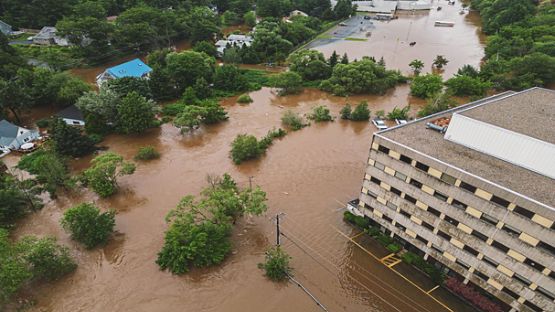In its 2024 annual litigation trends survey, corporate law firm Norton Rose Fulbright identified environmental, social, and governance (ESG) practices as a key dispute area.
Environmental concerns ranked as the most prominent area expected to drive disputes in 2024, selected by 71% of respondents. Among respondents who expected their environmental exposure to increase in the coming year, more than half (54%) identify allegations related to greenwashing or other false environmental claims as a contributor.
Among organizations anticipating increased exposure to social disputes, diversity, equity, and inclusion (DEI) policies and practices rank as the leading contributor (42%), followed closely by human rights issues (41%).
Johanne Desloges, Vice President of GCS Claims at Aviva Canada, presented compelling data and risk mitigation advice on this top litigation area at the RIMS Canada conference.
The scope of what is being litigated in the ESG space continues to grow but can generally be divided into three broad categories: greenwashing and greenhushing, climate rights and climate harm, and diversity, equity, and inclusion (DEI) disclosure, according to Desloges.
Greenwashing risk
On June 20, 2024, Bill C-59—legislation aimed at addressing greenwashing—was given royal assent. The amendments to the Competition Act now require businesses to substantiate any environmental claims about their products with “an adequate and proper test.”
“Currently, the amendments focus on products only, however, members of the Competition Bureau have pushed to expand the scope of the amendments to also include general environmental claims about businesses. More changes are coming,” said Desloges.
She says greenwashing also presents significant litigation risk of individual lawsuits and class actions, which are already happening in the US.
“Due to growing consumer concerns around climate change and the recent changes to the Competition Act, Canadian companies will find themselves increasingly susceptible to consumer claims as well as regulatory investigations and enforcement proceedings.”
Climate rights and climate harm risk
There is a growing number of cases being filed against corporate entities, aiming to hold them responsible for climate change impact. These cases often include allegations of failing to warn the public and consumers about the foreseeable harm their products cause.
“These cases are akin to tobacco and opiate litigations,” said Desloges. “While most are against the major carbon emitters, we are seeing a growing trend focused on other types of entities.”
So far, the focus has been government entities. For example, the Federal Court of Appeal, in a landmark decision, opened the door to 15 youths suing the Canadian federal government for its failure to adequately address climate change.1
In another case, a group of Canadian youth sought declarations that Canada violated their rights by failing to take sufficient action on climate change, and on an order requiring the Ontario government to implement a Climate Recovery Plan. It went to a full hearing in January of 2025, and the decision is pending.2
“What these two decisions highlight is that climate harm allegations in Canada are justiciable and capable of proof. And a business could become a target of litigation if it sets an emissions or other target and fails to meet it. It will likely inspire others to use the courts in Canada to further their climate change agenda,” said Desloges.
DEI risk
Canadian businesses are seeing an uptick in class proceedings by employees seeking redress against alleged systemic barriers to inclusion and advancement in the workplace.
“Employees are seeking remedies for gender- and race-based discrimination in pay, promotion, and retention practices, as well as remedies for workplace misconduct. This trend follows developments in the United States and is an area that Canadian employers should actively follow,” said Desloges.
The British Columbia Court of Appeal recently allowed the certification of a class proceeding against WestJet Airlines. The claim alleges that the company protects perpetrators of sexual assault and harassment and fosters a corporate culture that overlooks and tolerates harassment, encourages silence, and fails to properly investigate complaints. The case is still at the discovery stage and has not gone to trial.
“The Court of Appeal’s decision signals two things: first, employers are being held to their commitments to guard against employee harassment and discrimination. Second, courts may be willing to find that these commitments form part of class members’ employment contracts,” said Desloges.
How to mitigate ESG litigation risks
Desloges offered 6 recommendations:
1. Avoid misstatements
“Make sure that you have appropriate oversight of any statements being made and you include qualifications and limitations in relation to any statements or claims. Focus on tangible, measurable progress towards ESG objectives, and avoid overstating achievements or over-committing to improvements without a plan to deliver them.”
2. Review your supply chain
“As global supply chains become increasingly complex, companies are facing scrutiny over their responsibility for human rights violations, environmental damage, and labour abuses within their supply chains. Consider doing an annual ESG audit and conduct regular progress monitoring. Of course, be sure to act on the results.”
3. Add requirements to supply chain agreements
“Where relevant, think about implementing codes of conduct, information rights, and reporting requirements within supplier agreements. This will help ensure that you can align your ESG standards and get the necessary KPIs to monitor performance and substantiate the statements you make about ESG performance.”
4. Check your insurance portfolio
“Look for protection that covers you in relation to the ESG-related risks your business may face. This can include directors’ and officers’ coverage which could provide protection in the event that their duties are alleged to have been breached.”
5. Stay on top of regulatory compliance
“It is especially important if your business operates in more than one jurisdiction—within Canada or internationally—to be informed of applicable regulatory frameworks to avoid a regulatory complaint or a breach in reporting obligations.”
6. Look at your ESG risk map
“Prioritize any gaps and formulate an action plan to speed up reaction times and spot potential issues in advance.”
Looking to protect your business against new and evolving risks?
Aviva’s Global Corporate & Specialty team offers a prevention-first approach that combines technological innovation with risk management. If your large corporate business requires protection, with expert claims management and dedicated support, our team can help.
1 La Rose v. Canada, 2023 FCA 241
2 Mathur et al v. Ontario, 2020 ONSC 6918













